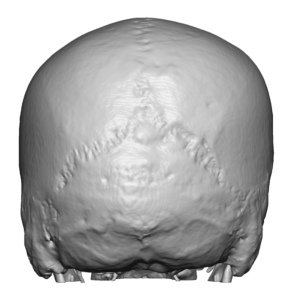There are various aesthetic procedures that require the separation of the scalp from the underlying skull bone to create their effects. The most well known historically is the endoscopic browlift at the front part of the scalp. But in some ways the reverse of an endoscopic brow lift is the hairline lowering forehead reduction procedure. This requires a near complete release of the scalp so that it can be brought forward shifting the frontal hairline down as a result creating a reduction in the length of the forehead.
The difference between a modest vs a significant hairline lowering is how far back on the skull the scalp is released. While the scalp is adherent to the bone over the entire skull it is well known to be particularly adherent over the crown of the skull. This is also a very posterior scalp area from the frontal hairline that can be difficult to release as it turns onto the back of the head.
In the November 2023 issue of the journal Aesthetic Plastic Surgery an article was published on this topic entitled ‘Surgical Anatomy of the Ligamentous Attachments in the Superoposterior Scalp Region’. Using cadaveric head dissections the anatomy of the soft tissue of the scalp over the original posterior fontanelle region was done. This areas is anatomically defined as the posterior extent of the sagittal suture towards the lambda, the obelion, and around the lambdoid suture. The location and dimensions of connective tissue attachments were identified in relation to these bony skull landmarks.

The scalp is very adherent over the crown of the head due to the intersection of the sagittal and lambdoid sutures as well as being the original posterior fontanelle region. Having placed hundreds of custom skull implants, many for the back of the head with their designs requiring release of the scalp over the crown area. I can verify that it is exquisitely adherent. There are usually paired emissary veins seen in this skull area which causes some moderate bleeding as well when released. To get a good release in this area for hairline lowering surgery I have found it useful to make a small incision near this scalp area so that its release can be maximally obtained.
Dr. Barry Eppley
World-Renowned Plastic Surgeon



